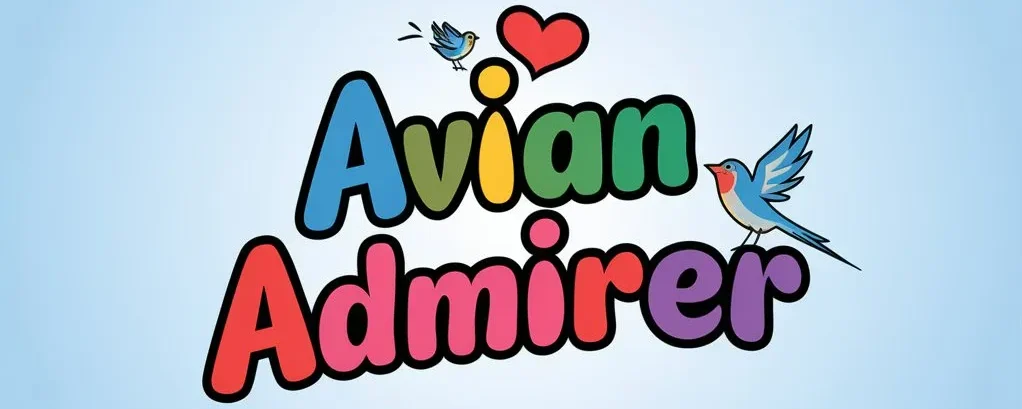Backyard Birds of North Carolina: Familiar Flyers
In North Carolina, you can find many types of backyard birds. These birds help keep the environment balanced. The American Robin shows when seasons change. The Northern Cardinal adds bright color to gardens. Each bird has unique behaviors and calls that help them survive. Watching how they interact can help you understand how they live together in your area. Enjoy observing these birds as they contribute to the beauty and health of your backyard!
Key Takeaways
- The American Robin has a bright orange-red breast. It often signals the arrival of spring and seasonal changes.
- Northern Cardinals are known for their vibrant red feathers. They are attracted to sunflower seed feeders.
- Carolina Wrens are cheerful and energetic. They love hunting for insects in backyards.
- Blue Jays have bold blue coloration and loud calls. They show intelligence and social behavior.
- Eastern Bluebirds are colorful and sing sweet songs. They commonly nest in tree holes or birdhouses.
The American Robin: A Harbinger of Spring

As you enter your backyard in early spring, you might hear the joyful song of the American Robin. This bird, known for its bright orange-red breast, represents new beginnings and hope.
Birdwatchers and casual observers alike appreciate its distinct calls. American Robins help control pests and spread seeds, supporting the ecosystem. During breeding season, their lively presence adds energy to the environment, reminding you of nature's cycles.
Following their migration patterns provides insights into climate and habitat changes. Your backyard can serve as a window into these larger ecological trends.
Recognizing the robin's symbolic meaning can deepen your connection to the changing seasons around you. Enjoy the simple beauty of these birds as they signal the arrival of spring.
Northern Cardinal: The Familiar Flash of Red
The Northern Cardinal is known for its bright red feathers and unique crest. This bird is commonly seen in North Carolina's backyards and brings joy to many birdwatchers. Cardinals symbolize happiness and hope.
To attract these lovely birds to your yard, try these tips:
- Set up a feeder with sunflower seeds.
- Plant native shrubs for shelter.
- Provide clean water, especially in hot weather.
These simple steps can help create a welcoming space for cardinals to visit. Enjoy their colorful presence!
Carolina Wren: The Energetic Songster

You may not always see a Carolina Wren, but you'll hear its cheerful song in North Carolina's backyards. These birds have brown feathers and a long tail. They live in many types of places, such as dense shrubs and the edges of open woods.
Carolina Wrens dart around looking for insects and berries to eat, showing how well they adapt to their environment. They often build nests in sheltered spots, using thick plants or human-made structures.
Their territory can change with the seasons. Weather affects their living space. When you listen to the Wren's song, you connect with the lively rhythm of your backyard, deepening your bond with nature.
Blue Jay: The Bold and Brilliant Bird
Blue Jays are common in North Carolina's woods, but they're unique. Their bright blue feathers and loud calls make them easy to notice. These birds show interesting behaviors and have strong social bonds.
- Blue Jays are good at finding food. They eat acorns, seeds, and insects.
- They're smart and can solve problems and use tools.
- They can mimic the calls of other birds, which is fun to observe.
When you watch them gather food, you may see them store it for later use. This shows their excellent memory.
Blue Jays bring energy and beauty to North Carolina backyards.
Eastern Bluebird: A Symbol of Happiness

The Eastern Bluebird adds cheer to your backyard. With their bright colors and sweet songs, they can enhance any garden.
These birds prefer open woodlands, farms, and parks. They need places to perch and plenty of insects to eat.
Eastern Bluebirds often forage together, showing that they enjoy being with one another. They nest in tree holes or birdhouses and take good care of their young.
Their presence brings happiness and beauty to nature, making them a favorite among bird watchers. By providing a friendly environment, you can attract these delightful birds to your yard.
House Finch: The Adaptable Feeder
The House Finch is well-known for its ability to adapt. These birds thrive in urban and suburban areas across North Carolina. They've a knack for adjusting to human activity and various environments.
You can often spot them in backyards, gardens, and parks, where they exhibit flexible feeding habits.
- House Finches eat a wide range of foods, including seeds and fruits.
- They usually gather in flocks, which helps them build social connections and allows for group feeding.
- Their cheerful song brings joy to city life.
These traits help House Finches survive and bring a lively presence to their surroundings.
Red-bellied Woodpecker: The Unmistakable Drummer
The Red-bellied Woodpecker is a distinctive bird found in North Carolina.
It's medium-sized with a black-and-white striped back and a hint of red on its belly. You can recognize its unique drumming sound as it taps on trees looking for insects.
This bird prefers deciduous and mixed woodlands but is also comfortable in suburban areas. It often nests in mature oaks, maples, and pines.
Tufted Titmouse: The Curious Companion
Focusing on the cheerful presence of the Tufted Titmouse, this small gray bird brightens many North Carolina backyards. Its distinctive tufted crest and curious behavior draw the attention of bird lovers.
Titmice are known for their inquisitive nature and often explore different areas in search of food. They show a strong tendency to interact with other birds.
- They partner with nearby birds to find food.
- They engage in playful behaviors to communicate.
- They form strong pair bonds during breeding.
Watching these charming birds reveals their social habits, which support both individual and group survival. By welcoming titmice into your yard, you connect with nature and enjoy watching the lively interactions of these delightful companions.
Black-capped Chickadee: The Friendly Visitor
Five black-capped chickadees often visit North Carolina backyards. You can recognize them by their black caps and white cheeks.
These small birds enjoy living in various places, like forests and neighborhoods. They eat insects, seeds, and berries, searching for food among leaves. Chickadees are curious and will approach bird feeders.
You can attract them by offering suet or sunflower seeds. Watching these friendly visitors can connect you with nature. Each sighting brings joy and makes your day a bit brighter.
Mourning Dove: The Serene Presence
The mourning dove provides a calm presence in your backyard, balancing the lively energy of the black-capped chickadee. These gentle birds are known for their soft cooing sounds. You can often see them perched on fences or searching for seeds on the ground.
Mourning doves thrive in many environments, such as urban areas, gardens, and open woodlands, and they adapt well to human activity.
- Their calls create a sense of tranquility.
- They prefer open spaces for feeding and nesting.
- Mourning doves form strong bonds with each other.
Watching these lovely birds can bring peace to your outdoor space, helping you feel connected to nature.
Purple Martin: The Sociable Swallow
When you go into your backyard, you might see purple martins. These birds enjoy being around others and often gather together. They like to nest in groups, which creates a lively scene as pairs share a housing structure.
Purple martins adapt well and often choose to nest near human homes. They mainly eat flying insects, so you can find them in areas where food is plentiful.
Watching their active way of life makes your backyard experience better and helps you feel more connected to nature. You may find that connections can grow in surprising places.
American Goldfinch: The Vibrant Yellow Delight
The American goldfinch often perches on sunflowers or flits between garden plants. Its bright yellow feathers stand out against the green background.
These birds enjoy social feeding in flocks and perform playful aerial displays. They primarily eat seeds, especially from thistles and sunflowers. In winter, their bright yellow changes to a dull brown as they enter winter plumage.
- Goldfinches live in North Carolina all year.
- They display acrobatic movements to reach seeds.
- Their cheerful calls bring joy to backyards.
Watching these birds strengthens your connection to local nature and highlights the beauty of wildlife.
Red-shouldered Hawk: The Majestic Soarer
The red-shouldered hawk is a striking bird. Its bold plumage and large wingspan make it easy to identify.
These hawks glide through the sky as they hunt for food. They prefer wooded areas and often nest high in trees. During mating season, you can hear their unique calls echoing in the forests.
Some of these hawks migrate based on the seasons, while others stay in one place all year. Their numbers remain stable due to habitat protection efforts.
Watching a red-shouldered hawk can deepen your appreciation for the birds in North Carolina and your connection to nature.
Frequently Asked Questions
What Is the Best Time to Attract Backyard Birds in North Carolina?
To attract backyard birds, focus on feeding them during spring and fall. These seasons are peak migration times when many species look for food. By having a variety of feeders and food options, you can see different birds visiting your yard. This not only enhances your birdwatching experience but also helps you connect with other bird enthusiasts in your area.
How Can I Create a Bird-Friendly Environment in My Backyard?
To create a bird-friendly backyard, install bird baths for drinking and nesting boxes for shelter. These features attract different bird species and provide important resources. They create a welcoming space that can strengthen your bond with nature and provide enjoyment as you watch the birds thrive.
What Type of Feeders Work Best for Different Backyard Birds?
To attract different backyard birds, use a mix of seeds like sunflower and safflower. Choose the right feeders, such as tube feeders or platform feeders. This combination provides more feeding options and helps create a diverse bird community in your yard. Enjoy watching the variety of birds that come to visit!
Are There Specific Plants That Attract More Birds to My Yard?
Yes, native plants like coneflowers and sunflowers attract many birds. Adding birdbaths also helps by providing water. These features create a welcoming space for birds in your yard, making it more vibrant and enjoyable.
How Can I Identify Birds by Their Calls and Songs?
To identify birds by their calls, listen carefully to each sound. Focus on recognizing different calls. Use bird call apps to help you catalog and compare sounds. Pay attention to the pitch, rhythm, and patterns of each call. Regular practice will improve your listening skills and deepen your connection to nature. Enjoy the process of discovering and understanding these beautiful sounds.

Ava is a bird enthusiast and nature lover who has spent countless hours observing and learning about the fascinating world of birds. With a passion for sharing her knowledge and inspiring others to appreciate the beauty of birds, Ava writes about her experiences and insights on avianadmirer.com.





